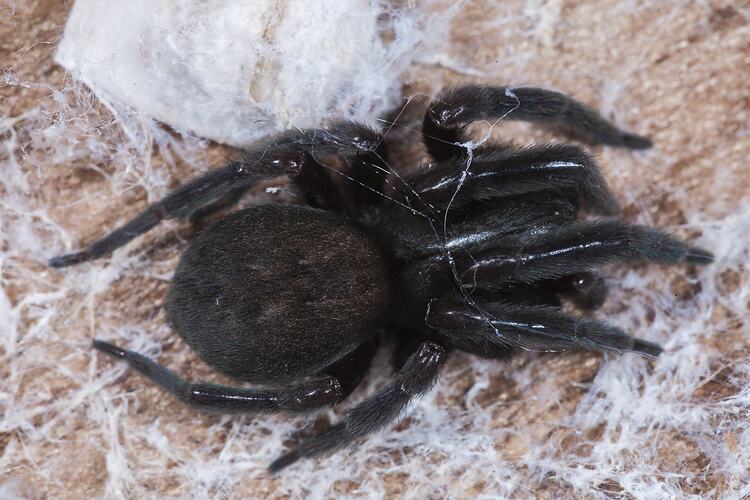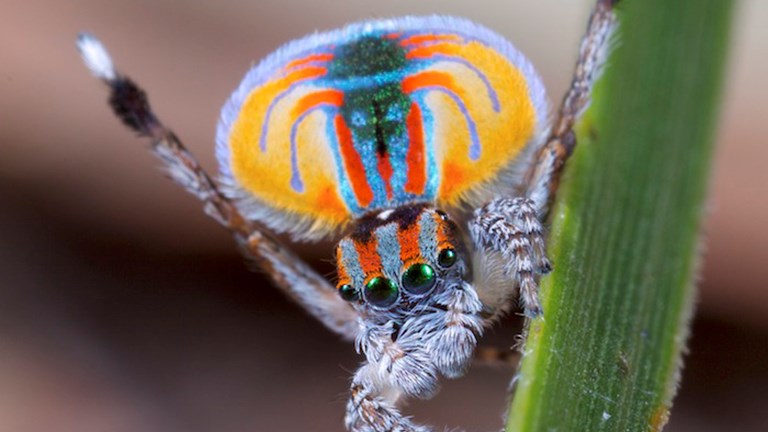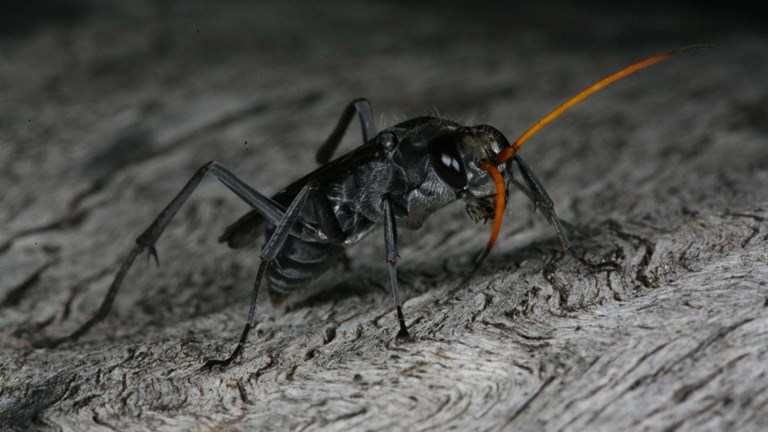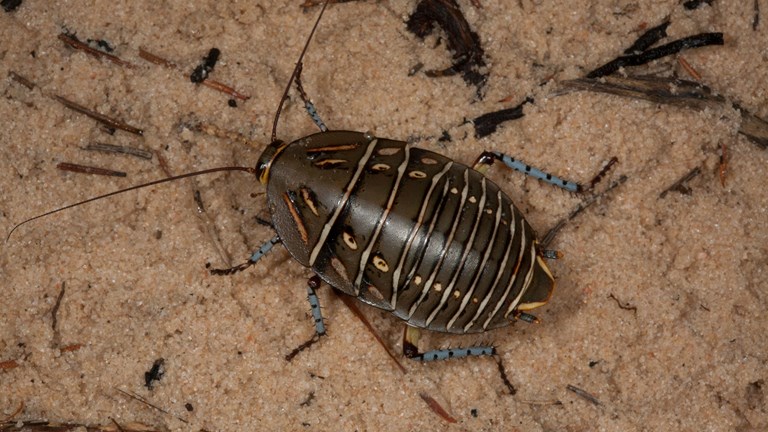Your eight-legged housemates
“What kind of spider is this? It was in my house! Is it dangerous?”
These are questions we are often asked at Museums Victoria.
Spiders may come into our homes for a variety of reasons, including hunting for food, looking for a sheltered, safe space to build a web or searching for a mate.
Although they may give us a fright now and then, spiders are good to have around.
Spiders eat insects (and other spiders), so they make sure to eat as many other house critters—such as clothes moths, termites and introduced cockroaches—as they can.
Here we’ve rounded up some of Victoria’s abode-loving arachnids to help you identify your eight-legged housemates.
If you can’t see your spider here, you can ask us to identify it for you.
Huntsmans
Huntsman spiders are generally large, fast-moving spiders that are famous for scaring people, whether it be in the home or car.
Unless defending their egg sac, huntsman spiders are usually timid. Their first response to danger is to run.
Often seen in Victoria are the Badge Huntsman (Neosparassus diana) and Social Huntsman (Delena cancerides).
Huntsmans have a flattened body and legs that extend forwards and sideways—a bit like a crab—rather than downwards like many other spiders.
This makes it easier for them to get underneath doors and through window frames into our houses. Hunstmans are active at night, hunting for food.
Social Huntsman Spiders live in large groups, sometimes with up to 300 individuals.
They share their prey with individuals in their own colony but can be very aggressive and cannibalistic to other colonies of the same species.
Black House Spider
Black House Spiders make funnel-shaped webs in, on and around buildings. You might see them in the corners of window frames, in between bricks and on fences.
If they make their webs near outside lights, they can take advantage of insects that are attracted to the light and blunder into their web.
Black House Spiders are good to have around the house! They are very timid towards humans, so bites are rare.
They are effective at keeping down insect numbers and are a food source for birds.
Brown House Spider
Brown House Spiders prefer dark, undisturbed places in urban environments to construct their webs. They create a tangle of sticky threads that attach to the ground or floor.
You might find them in cupboards, in the shed, in compost bins and under plant pots.
Despite being a different colour, Brown House Spiders are often mistaken for Redback Spiders due to their similar body shape and egg sac.
Daddy Long-legs Spider
Daddy Long-legs Spiders often make their webs in the corners of rooms or under porches and in sheds. Like many other spiders, they feed on small invertebrates.
But is it true that Daddy Long-legs Spiders have the deadliest venom of all spiders, but can’t bite through human skin? Not quite.
While Daddy Long-legs Spiders are known to prey on the highly venomous Redback Spider, their venom is not considered dangerous to people.
Redback Spider
Redback Spiders are often found around human habitation—in long unused shoes, in tin cans, underneath furniture and amidst garden rubbish.
They build a tangled web and, once constructed, will rarely leave it. If they are disturbed, Redback Spiders may fall to the floor and pretend to be dead!
Redback Spiders are rarely seen over winter, but in summer bites number in the hundreds in Australia. These spiders are not aggressive, and most bites probably occur when people inadvertently put their hand in the web.
Since antivenom has been available, there have been no confirmed fatal Redback envenomations.
White-tailed Spider
White-tailed Spiders don’t build a web but actively search for food. In doing so, they often find a way into our homes.
White-tailed Spiders like to hide in dark places during the day—a good reason not to leave piles of clothes on the floor. Outside, they can be found under bark or rocks during the day.
Tales of necrosis or ulceration resulting from a White-tailed Spider are unverified. Bites from this species may cause a burning pain, then local swelling and itching.
Spiders are fundamental to our planet's ecosystem, and can be helpful housemates in any home. And like any housemate: respect their space, and they’ll respect (and help) yours.








